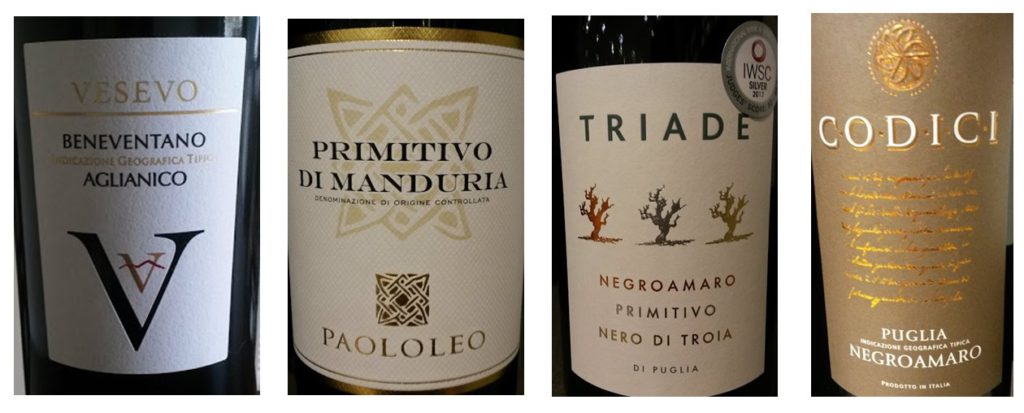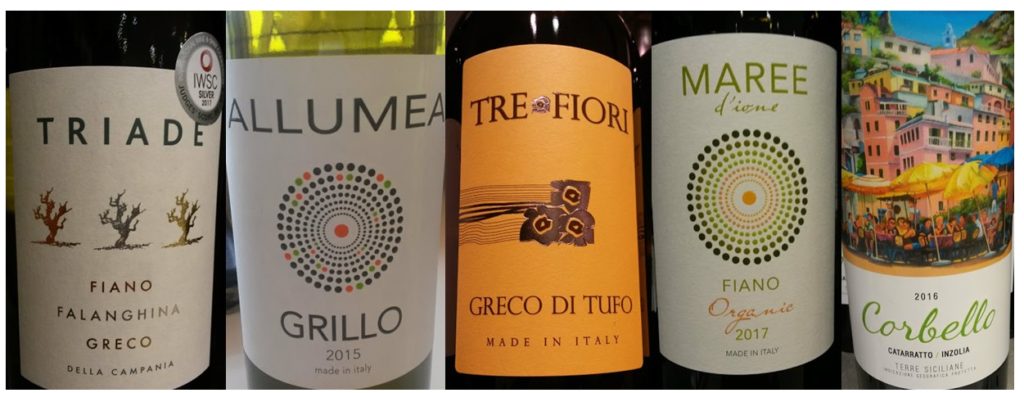Firstly apologies on the radio silence on the blog front, things got a tad busy, but I’ve finally found a window of opportunity to get something done!
In my last post I talked about the wines of Northern and Central Italy – home to many of the most well-known Italian wines and wine regions…think Chianti, Barolo, Amarone, Soave….the list goes on. Having said that, for me (and I stress this is very much a personal thing), I am more excited about what is happening in Southern Italy and Sicily.
Historically the South has always been seen (quite literally) as the poor relation to the North, but at least in terms of wine this is beginning to change. Wine quality is on the up as is experimentation and diversity, and even better news, the price point is usually very reasonable for the quality of the wines you can find.
As you might expect given the latitude – Southern Italy is pretty warm – there are an abundance of red wines, but perhaps surprisingly, the range of aspect (whether that be hills, ranges, mountains or even volcanoes!) ensures that it is also possible to make some pretty decent white wines too but more on that later.
As with my last blog, this isn’t a definitive list of all the grapes from these regions but it will hopefully give you a steer to try something new.
Red Grapes
The following names are likely to be unfamiliar to many, but don’t let that put you off, they are well worth exploring a bit:

Aglianico – High quality grape touted by many as being the “Barolo of the South” or as the locals here like to say Barolo is the “Aglianico of the North” nothing like regional rivalry eh?! Its best expressions are found in Basilicata and Campania (these two regions lie above the toe of Italy, the ‘in-step’ and ‘lower shin’ if you like!) But I digress…what do the wines taste like? Well they aren’t shy – the grapes can be hugely tannic and as a result are often left to ripen as late as possible on the vine, which results in a full bodied red which can be quite floral with lots of lovely concentrated ripe black fruits, chocolate/mocha notes and quite high alcohol with (perhaps surprisingly) a really good level of acidity. Look for Taurasi or Aglianico di Vulture for the best expressions of this grape.
Negroamaro – Probably the best known of the grapes from Puglia (this region is the ‘heel’ of the boot of Italy). Puglia is a hugely productive wine region so whilst a lot of wine from here is lesser bulk wines, there is value to be found in the region from the native Negroamaro grape. Usually used as a blending grape, the single varietal versions tend to be richly coloured with good acid structure and lots of ripe fruit and sweet spices – Not overly complex these tend to be pretty easy drinking and good value, perfect with a bowl of pasta! For higher quality look for Salice Salentino and Copertino these are blends usually made predominantly from Negroamaro.
Nero D’Avola (aka Calabrese) – the dominant red wine of Sicily. Quality varies dramatically but when the yields are restricted this grape gives full bodied, deeply coloured quite tannic wines with lots of black cherry and plum fruit. Not overly complex, many benefit from oak ageing. You can usually can get a pretty decent wine for a decent price too. Not particularly complex but if you are looking for a weekday wine, nothing too pretentious then this works fine.
Primitivo – Another locally grown variety from Puglia (this grape is also known in America as Zinfandel). Similar to the other main reds of the south this is a full bodied smooth red with lots of exuberant juicy fruit but can be prone to jamminess and high alcohol. It’s suffered a bit with mass production but its best iteration Primitivo di Manduria is worth seeking out. Also worth a look is the red blend sold by Waitrose called ‘Triade’ featuring Primitivo alongside Negroamaro and Nero di Troia. (They do a white blend with the same name as well, see below for more details)
Gaglioppo – found predominantly in Calabria (which is the toe of the boot of Italy on a map), this red has yet to reach international acclaim but is worth looking out for if you like your wines to be highly aromatic (usually floral) with quite big tannins, and perhaps unusually for the South, this is a lighter coloured red that is not quite so in-your-face as some!
White Grapes
I’ve never been a particularly huge fan of Italian white but the whites I do drink (if not from the Alto Adige region) tend to be from the south:

Fiano – one of three decent whites from Campania this is probably the best known. It is a medium bodied crisp fruity wine with quite pronounced aromatics: pear and apple alongside some honey and nuts (remember the recurring theme for the last blog on the white wines? This is the same!) Its best iteration can be found in Fiano di Avellino.
Greco – another of the trio of whites from Campania, this one is a little different in that there is no nuttiness…rather this is quite a mineral, less overtly aromatic dry wine which is more citrus in character. Look for Greco di Tufo.
Falanghina – bet you’ve never heard of this one, but it’s the third of the indigenous triumvirate from Campania and is dry with citrus and stone fruit aromas, very much an easy drinker. Although you don’t see too many single varietals on the High Street, Waitrose sell an award winning blend featuring Falanghina alongside Fiano and Greco called ‘Triade’ which is available for less than £9 (see above for the red blend also called ‘Triade’).
There are also a trio of whites from Sicily worth mentioning – they were historically part of the blend that goes into the sweet desert wine Marsala but can also make decent dry white wines:
Cataratto – the dominant white variety on Sicily unfortunately much of it was mass produced, flabby and insipid. With love and care though you can coax out a decent fresh citrusy white.
Inzolia – medium bodied and aromatic with herbal and citrusy notes and hints of almonds (sorry, the nuts are back!).
Grillo – this is a cross of Muscat of Alexandria and Cataratto and has some of that trademark Muscat orange-citrus character. The most widely available on the High Street (M&S, Waitrose, Majestic) Grillo’s quality can vary greatly but it with low yields and careful management the wines can be very interesting – with flavour profiles ranging from citrus to stone fruit and even tropical fruits with a touch of minerality.
So there you have it, a (relatively) quick 101 on Italy, I have skirted over lots of other grapes and wines but given the >350 varieties Italy has, I think I’ve given you enough to get started with, ciao!
